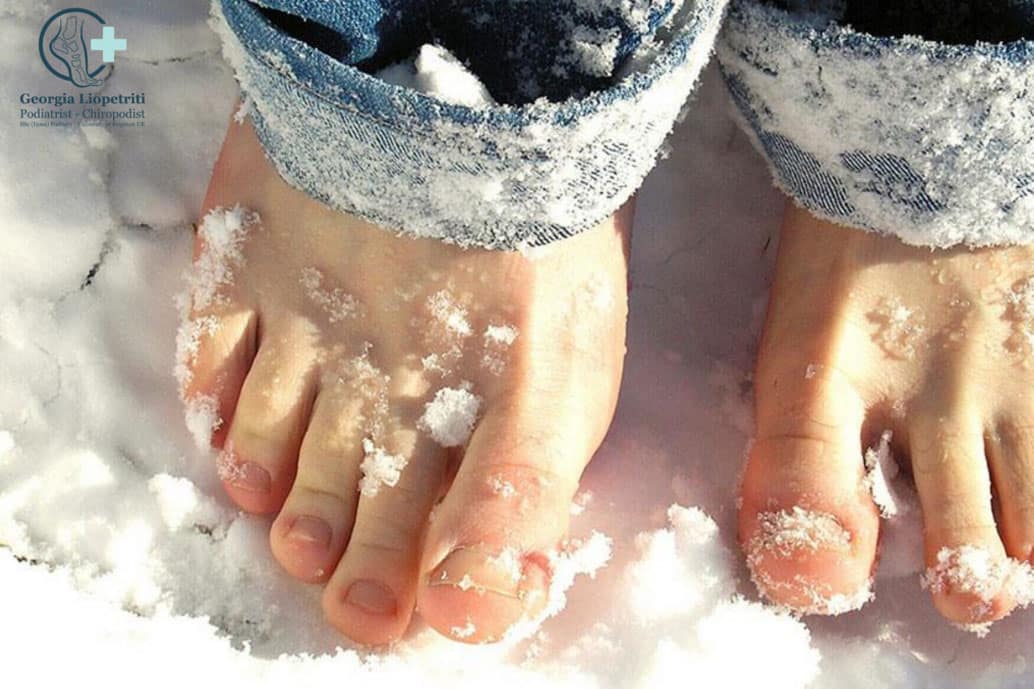What are chilblains?
Chilblains (also called pernio) are small itchy, red (and sometimes purple) swellings on the skin, which can become increasingly painful, can swell and then dry out leaving cracks in the skin that expose the foot to the risk of infection. They occur on the toes (particularly the smaller ones), fingers, the face (especially the nose) and the lobes of the ears. They can also occur on areas of the feet exposed to pressure, for instance on a bunion or where the second toe is squeezed by tight shoes. They can also lead to blisters and break down to become a small ulcer prone to infection.
What causes them?
Chilblains develop when the tiny blood vessels under the skin constrict under cold conditions reducing the flow of blood until the area warms up again and causes some leakage of fluid into the surrounding tissue. They are caused by the skin’s abnormal reaction to cold but not everyone develops them as this depends to a large extent on the efficiency of your circulation. People with poor circulation and other health problems involving their blood vessels are likely to be more prone to developing chilblains. In addition, damp or draughty conditions, dietary factors and hormonal imbalance can also be contributory factors. It is thought that rapid temperature changes from cold to hot can also be a cause. If the skin is chilled and is then followed by too rapid warming next to a fire or through using a hot water bottle, chilblains may result.
Who gets them?
Although chilblains are common, the condition mainly affects young adults working outdoors in cold places or people who do not wear socks or tights in winter. Elderly people, whose circulation is less efficient than it used to be, people who don’t take enough exercise and those suffering from anaemia are also susceptible.
How do I know I have them?
During the onset of winter, susceptible people will experience burning and itching on their hands and feet. Upon entering a warm room, the itching and burning is intensified. There may also be some swelling or redness and in extreme cases the surface of the skin may break and sores (ulcers) may develop.
What are the treatments?
If you have developed chilblains do not scratch them, instead use soothing lotions such as witch hazel and calamine on them to take away most of the discomfort.
If the chilblain has ulcerated, apply an antiseptic dressing. If you have diabetes or are undergoing medical treatment, do have the ulcer assessed by your GP or podiatrist.
If the chilblains have not broken, you can paint them with a mixture of friar’s balsam and a weak solution of iodine, which your pharmacist may make up for you or an over-the-counter preparation. At night, rub some lanolin ointment well into the feet to help retain the heat.
How can I prevent them?
The best way to prevent chilblains is to keep your legs, feet and body warm, especially if your circulation is poor and your mobility is limited.
The whole body, rather than just the feet, needs to be kept warm. Trousers, long boots, tights, leg warmers, long socks and gloves will also help.
Source: The College of Podiatry cop.org.uk

